Affiliate disclosure: This post may contain affiliate links. Please see our Privacy Policy.
Blackcurrant wine is a lovely deep, flavorful wine. Dark and intense, this berry wine is rich and easy to make at home.
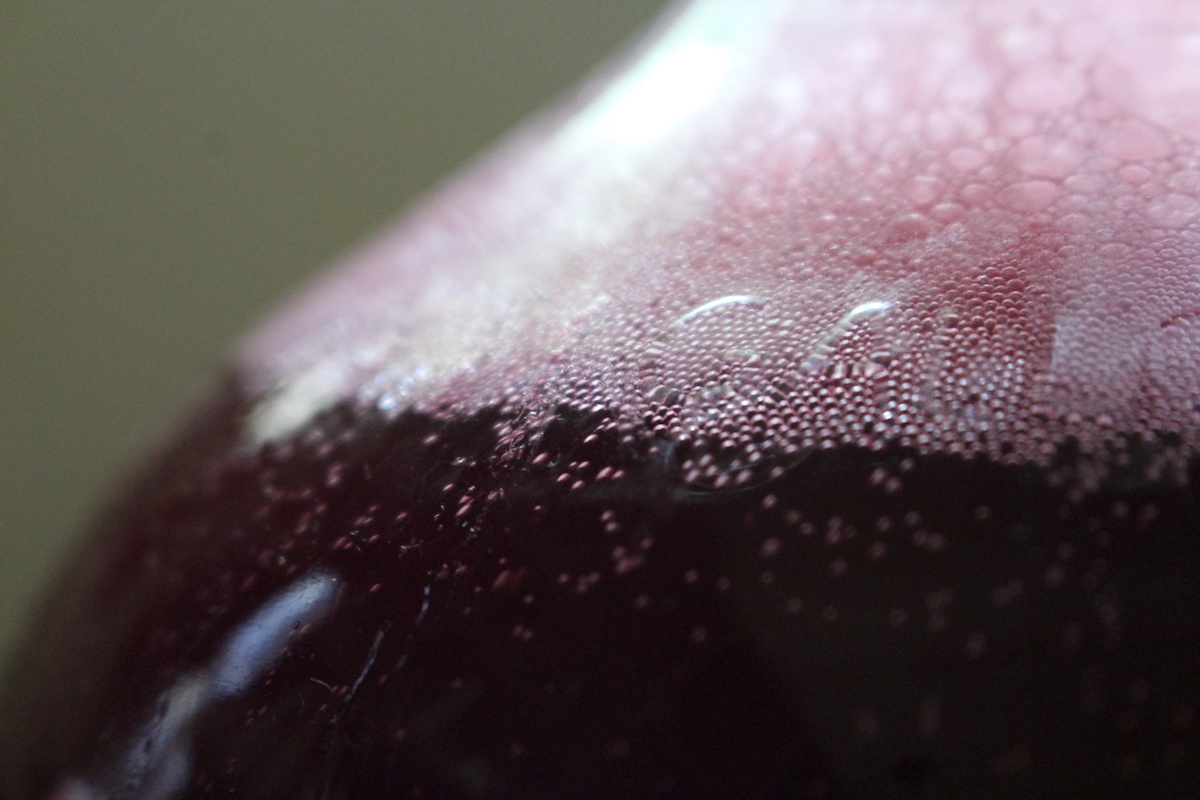
Blackcurrants themselves are very tannic — they possess a flavor that is sweet, yet sharp. This lends a complex but balanced flavor to your wine that is highly enjoyable. Although blackcurrants are most often preserved in the form of jam, jelly or pie filling, they also render a delicious fruit wine.
For the best blackcurrant wine or mead, try to select berries at the peak of ripeness. Ripe blackcurrants should be dark purple, nearly black. They should still be firm, however.
Are blackcurrants no longer in season in your area? Frozen black currants or blackcurrant juice will work as well.
Making blackcurrant wine is the same as making any small-batch country wine. You’ll simply need a good deal of blackcurrants, sugar, a few winemaking ingredients, and a nice strain of winemaking yeast.
Your fruit-wine mixture will ferment for 10 to 14 days, just until the active fermentation is finished. Then you’ll siphon your wine to a clean fermentation vessel, leaving the fruit and sediment behind.
During this secondary ferment, your wine will ferment at a slower pace. At this time, it is best kept in a cool, dark location for 2 to 3 months. If needed you may need to rack it a few more times to clarify it.
After that, you’ll simply bottle your wine and let it bottle-age for at least 2 months (or longer if you’d like to wait for the flavor to improve even more). Then, it’s time to enjoy that wine!
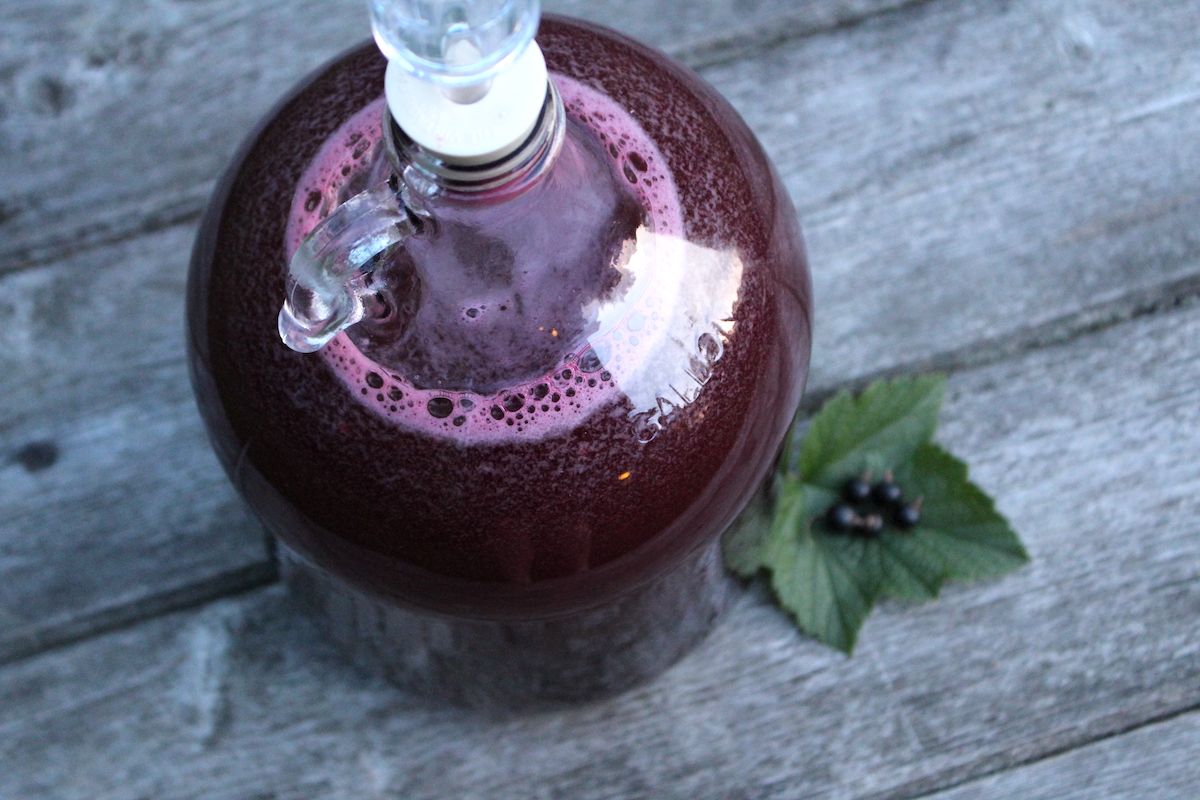
I’ve typed this up as a straightforward recipe assuming the reader is already familiar with basic winemaking procedures and language. For those new to winemaking, these guides should answer any questions you have along the way:
- Beginners Guide to Making Fruit Wines will take you through all the stages in the winemaking process.
- How to Make Mead (Honey Wine) does the same, but there are some particularities when using honey instead of sugar.
- Equipment for Winemaking looks into all the basic equipment you’ll need to make your first wine (besides your ingredients).
- Ingredients for Winemaking outlines all the other things you’ll need (besides yeast).
- Yeast for Winemaking can be a complex subject given the dozens of common yeast strains (and hundreds of obscure ones) out there. I break them down here.
Ingredients for Blackcurrant Wine
You’ll need to collect just a few ingredients to make blackcurrant wine.
For those new to winemaking, you can read over this primer about winemaking ingredients to explore the role each element plays here.
For a one-gallon batch of blackcurrant wine, you will need:
- 5 lbs blackcurrant fruit (fresh or frozen)
- 2-¼ lbs sugar (4-½ cups)
- Water to fill
- 1 tsp Yeast Nutrient
- ½ tsp Acid Blend
- 1 tsp Pectic Enzyme
- Wine Yeast
In addition to blackcurrant fruit, you’ll also need an acid blend, pectic enzyme, wine yeast and yeast nutrient. You can buy small winemaking kits that contain most of these ingredients — they usually contain a pectic enzyme, acid blend, and wine tannin together but you won’t need the tannin for this recipe as blackcurrants have natural tannins.
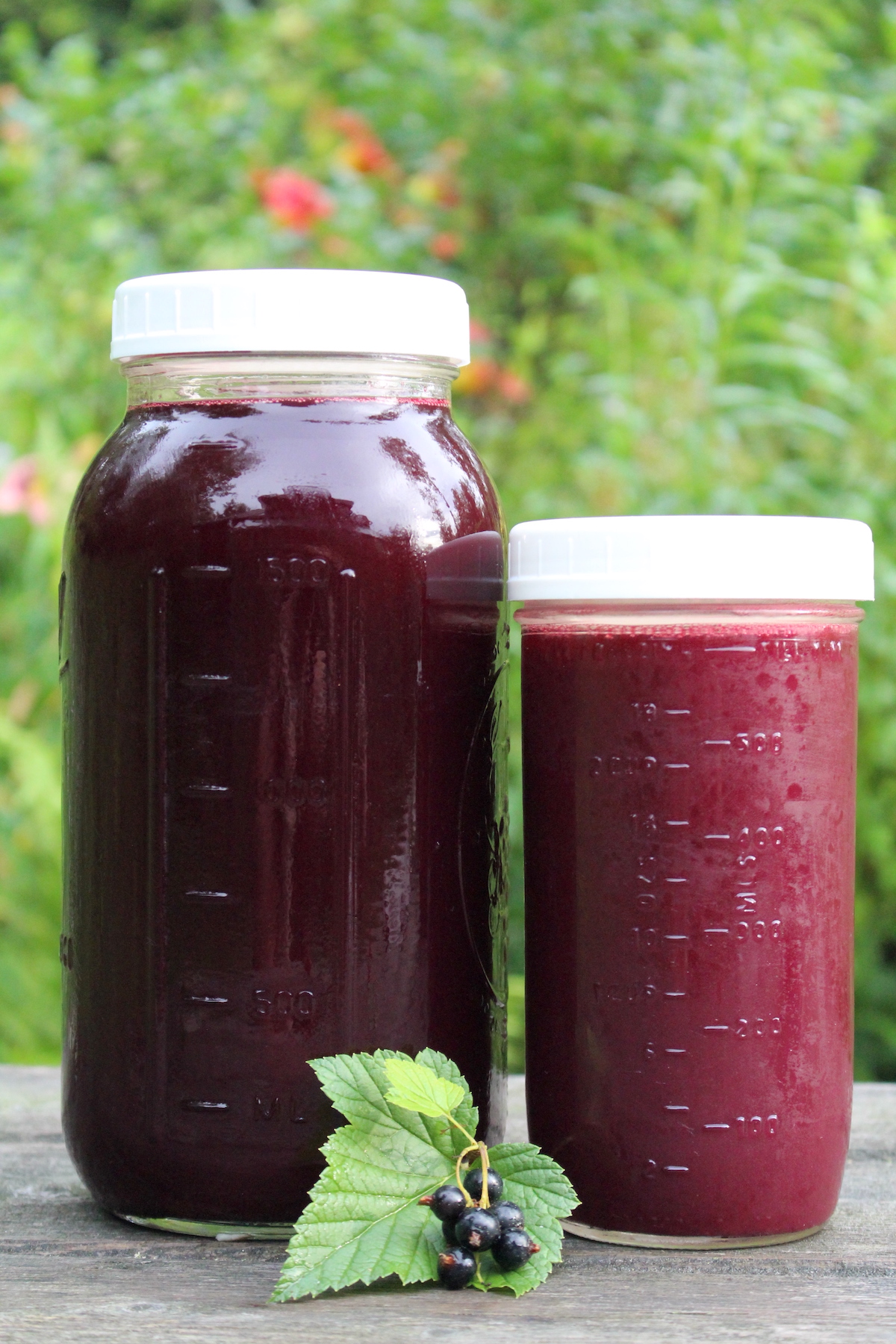
You’ll also need a wine yeast and a packet of yeast nutrient.
For wine yeast, choose a yeast with a moderate alcohol tolerance. Some nice yeast choices for blackcurrant wine are Montrachet yeast, Lalvin 71B RC212 and Lalvin 71B-1122.
Lalvin RC212 is also a good yeast for full-bodied red wines. Lalvin has an alcohol tolerance of 14% to 16% and is suitable for non-grape red and black fruits and berries (including plums, pomegranates, blackberries and raspberries).
Lalvin 71B-1122 is known for producing fruity reds as well as blush wines, rose and semisweet wines with fruit flavor. It’s a good choice for malic-rich fruit and berries. Alcohol tolerance to 14%.
About 5 pounds of blackcurrants are needed for a one-gallon batch of wine. You can use either fresh or frozen fruit, but frozen is better in this case.
As blackcurrants are naturally high in pectin, they are better if first frozen to help break down their pectin. Freeze blackcurrants for 1 week to cut their pectin content by half.
You can also use bottled blackcurrant juice if unable to source fresh or frozen berries. This can be found at many health food stores as well as occasionally online. One quart of blackcurrant juice should be enough for a 1 gallon batch of wine.
Besides these winemaking ingredients, you will also require the following equipment:
- One Gallon Glass Carboy (frequently sold as a kit with a rubber stopper and water lock together)
- Rubber Stopper and Water Lock (if not included above)
- Brewing Siphon
- Wine bottles or Flip-top Grolsch bottles
- Bottle Corker and clean, new corks for bottling
- Brewing Sanitizer
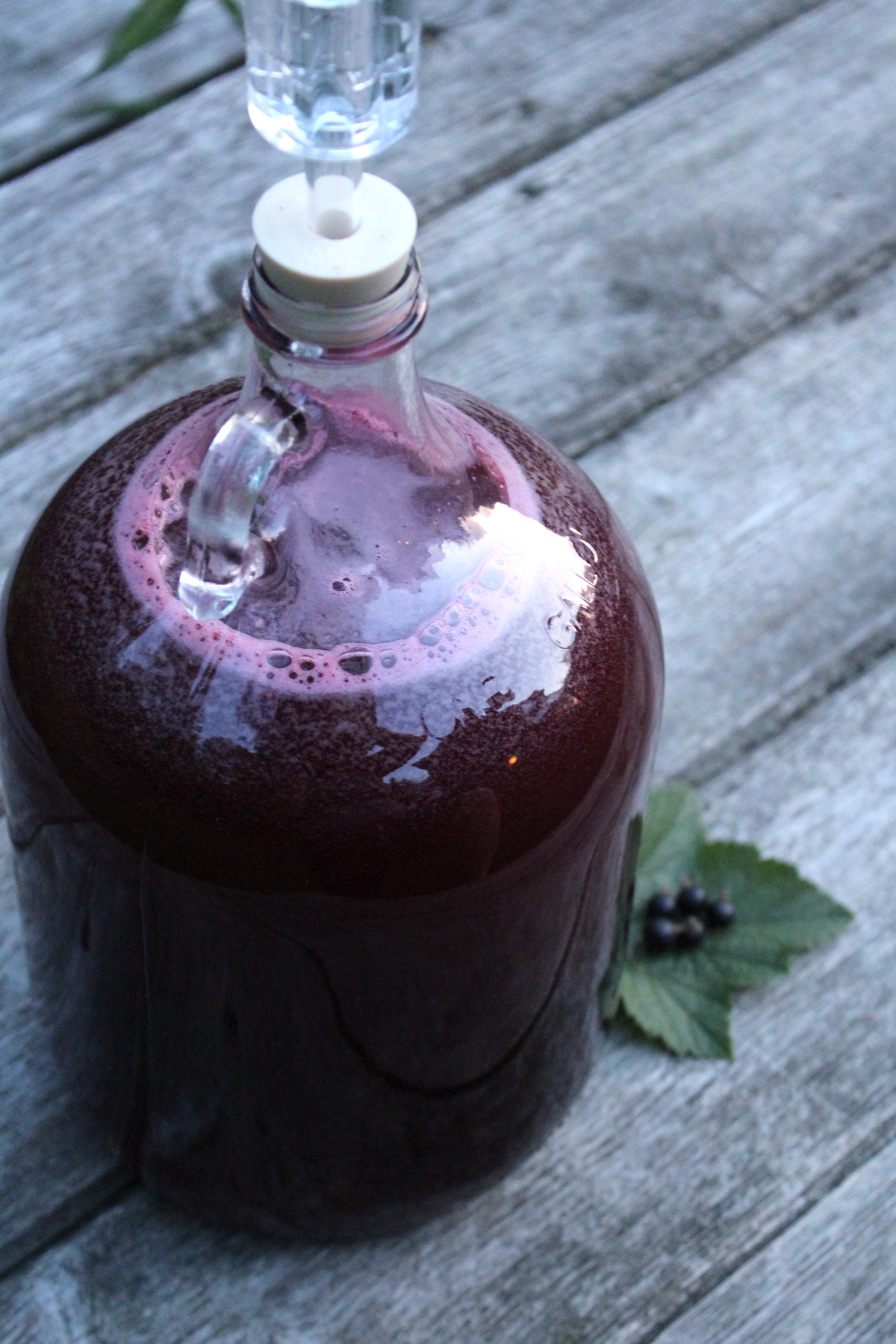
Making Blackcurrant Wine
Pull berries out of the freezer to defrost. (If your blackcurrants are fresh, consider freezing them first for 1 week to help break down their pectin.)
Once thawed, place the fruit in a wide-mouth carboy for the primary ferment. Cover fruit with boiling water, and then add the sugar, acid blend, pectic enzyme, and yeast nutrient. Stir to incorporate.
Allow this mixture to cool before finally adding the wine yeast.
Follow the instructions supplied with your specific yeast. Many yeasts require rehydrating before adding to your wine. If yours requires this, rehydrate your yeast in a bit of room temperature water for 10 minutes before adding it to your mixture.
After adding the yeast to your carboy, top up with enough water to fill and leave 2 inches of headspace, and seal with a water-lock. The water lock will allow CO2 to escape, but keep contaminants out; the headspace is needed for the wine to bubble and ferment.
You should begin to see a very active bubbling fermentation in 24 to 72 hours.
Leave your blackcurrant wine to ferment in primary for about 10 to 14 days. The fermentation should begin to lose steam around then. Bubbling will largely have stopped and you should see sediment at the bottom of your carboy.
The next step is to move the wine to a clean vessel for a secondary ferment, leaving the fruit and sediment or “lees” behind.
Siphon the wine into a clean carboy and follow this by topping it up with enough water to bring the liquid level up to the neck of the carboy. You want to expose as little of the wine to air during fermentation.
Seal with a clean waterlock and allow your wine to ferment in secondary for another 2 to 3 months. Blackcurrant wine really benefits from a longer secondary fermentation, trust me!
If making blackcurrant mead, leave in secondary for 2 to 6 months. Honey is harder than sugar for the yeast to digest and so a longer ferment is necessary.
Additionally, you may need to rack the wine (move to a clean vessel) several times during secondary to help clarify the wine.
Towards the end of secondary, taste your wine. The flavors should be balanced and sweet. If too dry, move the wine to a clean carboy and adjust to your tastes. If backsweetening is needed, be sure to stabilize the wine before adding sugar.
When adding sugar, it’s generally seen as good backsweetening practice to first add the sulfite, wait 12 hours, then add the sorbate, and then wait 48 hours before adding the sugar.
Once adjusted to your tastes, put back into ferment for at least a week or two before bottling.
Once you’ve bottled your wine with corks, let the wine bottle-age for at least 2 months before drinking. Blackcurrant wines bottle-aged for a year will be even more delicious.
Ways to Preserve Blackcurrants
Looking for more ways to preserve black currants?
- Blackcurrant Jelly
- Blackcurrant Jam Recipe for Canning
- Canning Currant Pie Filling
- Homemade Blackcurrant Liqueur (Cassis)
- Homemade Blackcurrant Gin Recipe
- How to Make Blackcurrant Mead
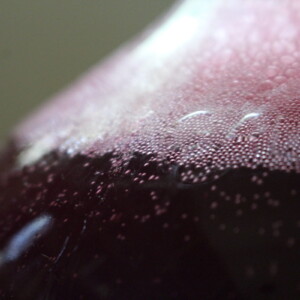
Blackcurrant Wine (& Mead)
Equipment
Ingredients
- 5 lbs blackcurrants, fresh or frozen, see notes for juice
- 2-¼ pounds Sugar, about 4-½ cups
- Water, to fill
- 1 tsp yeast nutrient
- ½ tsp acid blend
- 1 tsp Pectic Enzyme
- 1 packet wine yeast, see note
- Optional ~ Campden Tablet and Potassium Sorbate for Stabilizing, I do not use these
Instructions
- If using fresh fruit wash to remove any lingering insects. If using frozen fruit, thaw.
- Place thawed fruit in your wide-mouth carboy and cover with boiling water. Mix in the sugar, acid blend, pectic enzyme, and yeast nutrient. Stir until dissolved.
- You will add your wine yeast once the mixture has cooled. Rehydrate yeast for 10 minutes in room temperature water before adding to the carboy.
- After adding the yeast, top with enough water to leave around 2 inches headspace at the top of your 1 gallon carboy.
- Seal with a waterlock and allow to ferment in primary for 10 to 14 days.
- Rack to a clean fermentation vessel for secondary, leaving the fruit and sediment behind. Top with water again to bring the water level to just below the neck of the carboy and seal with a waterlock.
- Ferment in secondary for 2 to 3 months for wine and 2 to 6 months for mead. Multiple rackings may be needed during this time to help clarify the wine.
- Taste wine and backsweeten if needed. See notes below in regards to backsweetening.
- Once ready, rack into wine bottles and seal with wine corks.
- Allow to bottle age for at least 2 months to up to a year.
Notes
Fresh Fruit or Juice
You can substitute juice for fresh or frozen fruit in this recipe. About 1 quart of blackcurrant juice will be needed for a 1-gallon batch of wine. If using fresh fruit, it is recommended that the fruit be frozen first to help break down the pectin. Freezing fruit for just 1 week will reduce the pectin content by half.Yeast
For blackcurrant wine, some good yeast choices include Montrachet yeast, Lalvin 71B RC212, and Lalvin 71B-1122. See notes within the article for specific qualities of each yeast.Stabilizing and Back Sweetening
If your wine seems too dry for your taste at the end of secondary, you have the option to backsweeten it, Rack the wine to a new container so as to not stir up sediment, and add 1 Campden tablet and a ½ teaspoon potassium sorbate to stabilize the wine. (If you skip this step, the added sugar will reactivate the yeast, a rapid ferment will occur, and your bottled wine may burst given the pressure.) Wait 24 to 48 hours after stabilizing your wine for all the yeast to die off, then sweeten the wine by making a simple syrup(combine equal parts sugar and water in a heated saucepan and add to your wine). Try adding ½ cup of sugar at a time to your one-gallon wine at first.Nutrition
Nutrition information is automatically calculated, so should only be used as an approximation.
Summer Winemaking Recipes
Looking for more homemade country wines to make this summer?
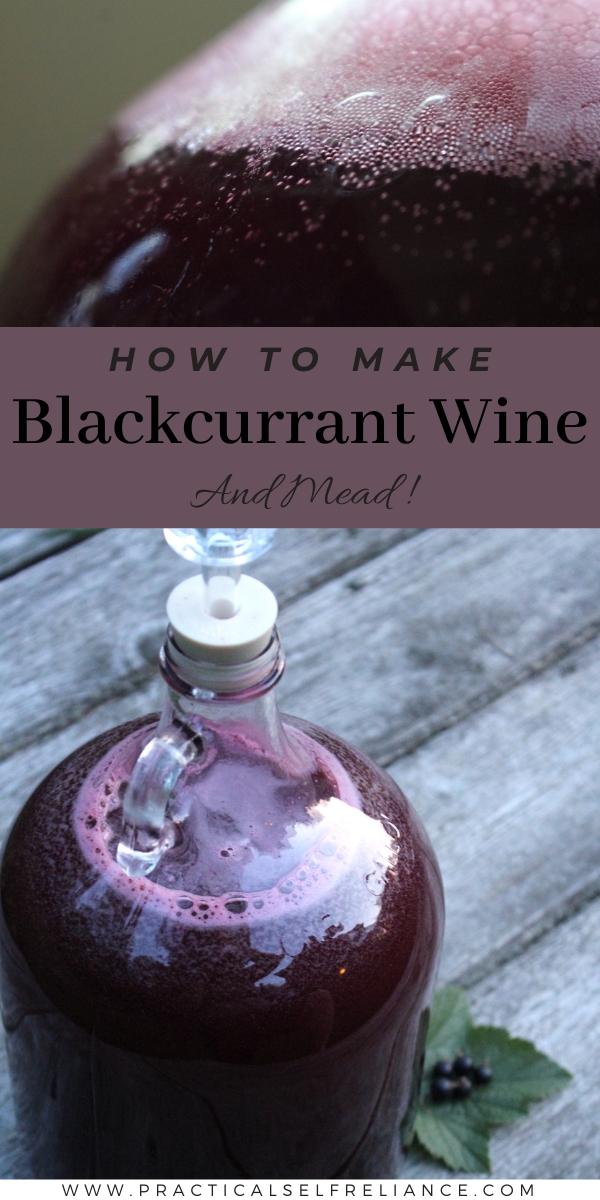



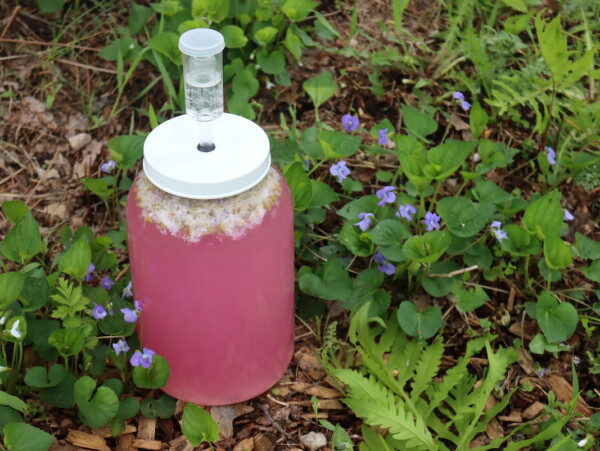










This is my husband’s favorite blackcurrant recipe, and while I’m partial to jam, he has me make a batch of this every year just for him.
recipe for 1 galon 5 liter?
You should be able to use the same recipe for 5 litres. They’re not that far off from each other.